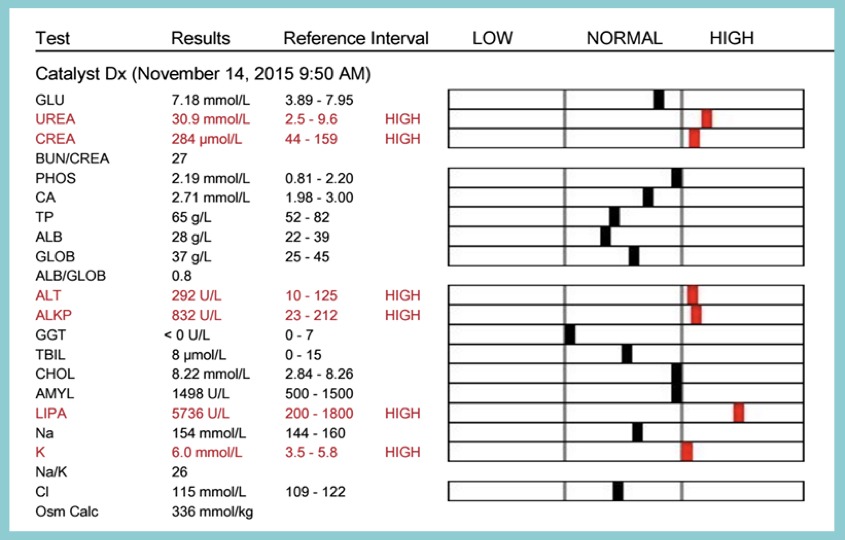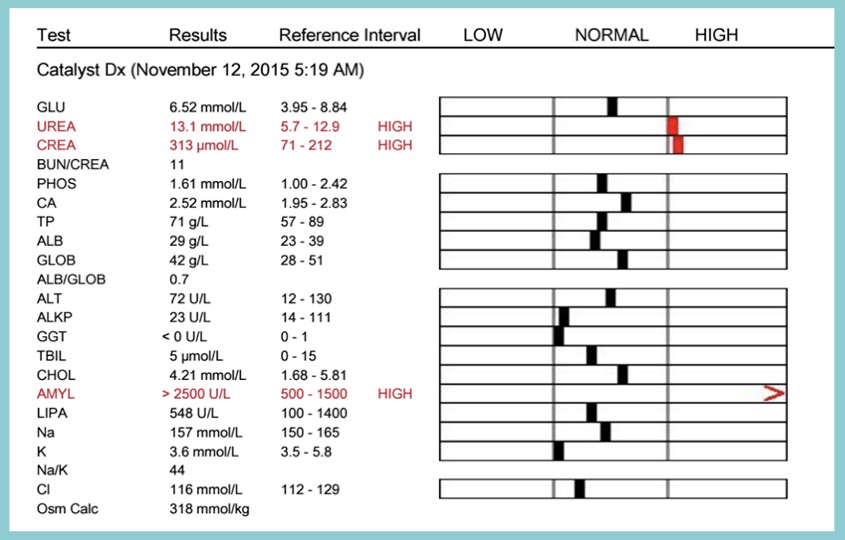It is difficult for dog owners to make sense of those abbreviations and values in blood tests. Yet, we should try to because blood work could help detect and identify health issues which your dog cannot tell you directly what’s wrong with him.
Common blood tests are Complete Blood Count (CBC) and Biochemical Blood Profile (aka Blood Chemistry Panels) which we focus on explaining here. Because chemicals found in the blood stream can correlate with specific organs, Biochemical Blood Profile can tell you more information than just blood count.
One thing you need to bear in mind is that an evaluation of these blood samples is quite sophisticated and reviewing the results is a mix of art and science which a trained professional needs to do based on these results, together with medical history, physical examination, tests such as CBC and urinalysis and other factors. Now let us invite East Island Animal Hospital to explain to us in layman terms what the values of blood tests mean to be served as a reference.
GLU (Glucose)
High levels may indicate stress, Cushing’s disease, diabetes, pancreatitis or can be due to certain medications. Low levels can indicate liver disease, insulin overdose, severe bacterial infection, hypothyroidism or Addison’s disease.
BUN (Blood Urea Nitrogen) / CREA (Creatinine)
High levels may indicate kidney failure or disease, poor circulation to the kidneys and urinary obstruction. But it may indicate dehydration or reflect high protein diet only (usually dogs fed on raw meat diet has higher level of BUN). Low levels may indicate liver disease or starvation.
PHOS (Phosphorous)
High levels may indicate kidney disease, dietary imbalance, excess ingestion of vitamin D and severe tissue trauma. Low levels may indicate dietary imbalance, certain cancers, overdose of insulin, diabetes, eclampsia and an overactive parathyroid gland.
CA (Calcium)
High levels indicate certain forms of cancer, Addison’s disease, excess intake of vitamin D and an overactive parathyroid gland. Low levels indicate eclampsia, severe pancreatitis, dietary imbalance, intestinal absorption disorders, low intact of vitamin D, Cushing’s disease and certain toxin ingestions.
TP (Total Protein)
High levels indicate dehydration, inflammation, chronic infection and certain cancers. Low levels indicate intestinal absorption problems, liver disease, Addison’s disease, severe burns and losses through the kidneys.
ALB (Albumin)
High levels indicate dehydration. Low levels indicate chronic inflammation, liver disease, kidney disease, starvation and blood loss.
ALT (Alanine Transaminase)
High levels may indicate liver damage, toxin ingestion, Cushing’s disease and various metabolic disorders. Low levels may indicate starvation or malnutrition.
ALKP (Alkaline Phosphatase)
High levels may indicate a bile duct obstruction, Cushing’s disease, liver disease, certain cancers and may be due to certain drugs such as steroids or phenobarbital. Low levels may indicate starvation or malnutrition.

GGT (Gamma-Glutamyl Transpeptidase)
High levels indicate bile duct obstruction, liver disease, pancreatitis, Cushing’s and can be caused by high levels of steroids. Low levels indicate starvation and malnutrition.
CHOL (Cholesterol)
High levels are not as important as in people. Low levels may indicate liver disease, starvation, kidney disease, Cushing’s, pancreatitis, diabetes and hypothyroidism.
AMYL (Amylase)
High levels may indicate pancreatic inflammation or cancer, kidney disease, prostatic inflammation, diabetic ketoacidosis and liver cancer. Low levels can indicate malnutrition or starvation.
NA (odium)
High levels may indicate dehydration, lack of water, diabetes insipidus, Cushing’s and excess salt intake. Low levels indicate starvation, severe diarrhea, vomiting, Addison’s disease, hypothyroidism and metabolic acidosis.
K (Potassium)
High levels may indicate diabetes, ingestion of certain toxins, urinary obstruction, acute kidney failure, severe muscle damage and Addison’s disease. Low levels indicate vomiting and diarrhea, gastrointestinal cancer, insulin overdose, Cushing’s disease, overuse of diuretics and starvation.
CL (Chloride)
High levels may indicate dehydration, metabolic acidosis, Addison’s disease and kidney disease. Low levels indicate vomiting and metabolic alkalosis.
 In this blood test result, we can see high level of UREA, CREA, ALT and ALKP, which means this animal maybe indicate kidney failure or disease, liver damage.
In this blood test result, we can see high level of UREA, CREA, ALT and ALKP, which means this animal maybe indicate kidney failure or disease, liver damage.
 In this blood test result, we can see high level of UREA, CREA and AMYL, which means this animal may have kidney failure or disease, pancreatic inflammation or cancer.
In this blood test result, we can see high level of UREA, CREA and AMYL, which means this animal may have kidney failure or disease, pancreatic inflammation or cancer.
————————————————————————————————- Information provided by East Island Animal Hospital.
Hellodog does not provide medical advice, diagnosis or treatment. See more details here.
